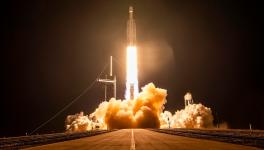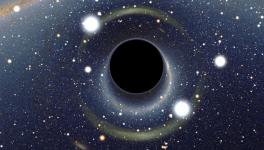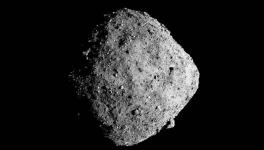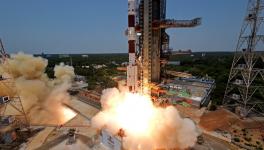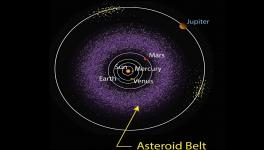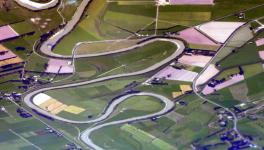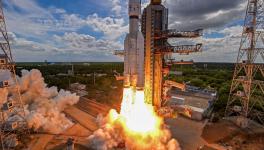Why did NASA Purposefully Smash Its Spacecraft Into an Asteroid?
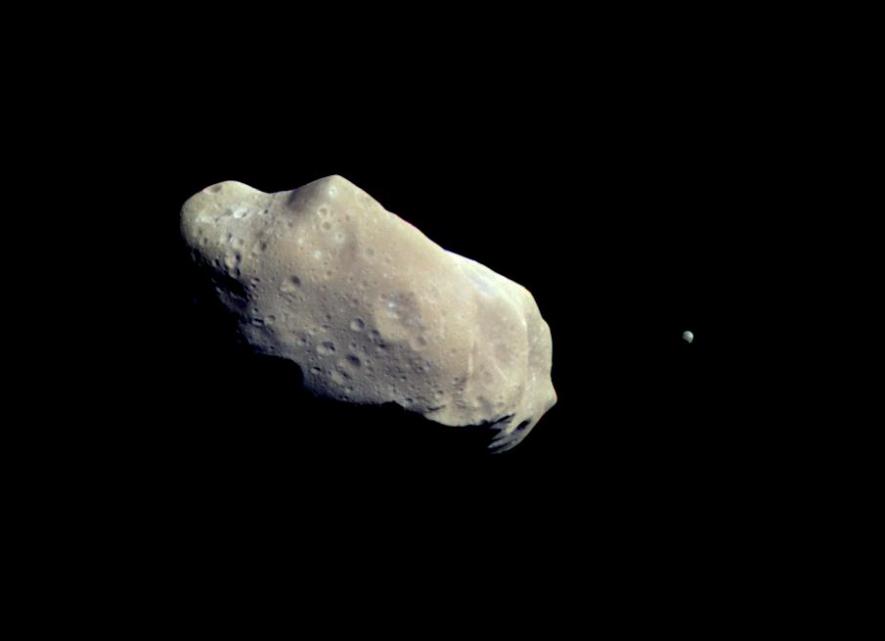
Image Courtesy: Twitter
NASA (National Aeronautics and Space Agency) has smashed its spacecraft DART into an asteroid today. The DART (Double Asteroid Redirection Test) intentional collision with the asteroid has been conducted as a test to see whether similar events would be possible in future to nudge an asteroid out of its way, which may be potentially harmful to Earth. The DART hit Dimorphos, a 160m wide object, as its target.
In this unusual and first-of-its-kind experiment, NASA successfully smashed the asteroid 11 million kilometres away from Earth. Cameras installed in DART returned an image per second right up to the moment the spacecraft collided with the target. It was a steady image stream as the target was obliterated. Notably, DART target Dimorphos is a small member of an asteroid pair. It is the moon of the much larger sibling Didymos.
The DART spacecraft is similar to the size of a vending machine and was moving at a thrilling speed of 14,000 miles/hour as it smashed into its target Dimorphos.
Lori Glaze, the planetary science division director of NASA, in a statement, commented, "It went from a collection of individual pixels, and now you can see the shape and shading and texture of Didymos, and you can see the same thing with Dimorophos as we get closer and closer. This is so cool."
The last shots from DART's cameras revealed that Didymos is a slightly egg-shaped rock with boulders and craters. The DART cameras were sending the second-to-second images until they went blank, the moment when the collision happened in reality. This was the moment to bring jubilance to the NASA team.
NASA scientists believe that although the asteroid may not have broken up entirely, it got dented, and the impact should have slightly shortened the orbit of Dimorphos around Didymos. If this is true, it will prove that a collision with a spacecraft may alter the trajectory of an asteroid.
However, more details about the impact are yet to come out, and astronomers will continue to study the asteroid pair in the coming weeks. However, the NASA team believed that it was conducted successfully. Bill Nelson, the NASA administrator, said in a statement, "We are showing that planetary defence is a global endeavour, and it is possible to save our planet."
Dimorphos is smaller—the size of a pyramid- and has never been a threat to Earth. But several other asteroids and comets are revolving in orbits closer than the asteroid belt. This also includes some that NASA has not yet discovered. If a bigger asteroid collides with the Earth, that may pose a potential threat to lives on Earth. It is worth remembering here that one of the prominent reasons for the extinction of dinosaurs was hitting the Earth by a large asteroid, which created a huge amount of debris and dust, so heavy that even sunlight could not penetrate through. This led to the extinction of plants, other organisms, and eventually, the dinosaurs.
The DART probe has been on work since 2015 and was developed and operated by John Hopkins University's Applied Physics laboratory along with support from many NASA centres. This was launched in November last year. DART is a part of the bigger AIDA project (Asteroid Impact and Deflection Assessment), a joint collaboration between NASA and the ESA (European Space Agency). The mission has observatories situated in Arizona, New Mexico, Chile and other places where astronomers have fixed their telescopes on Dimporphos and Didymos to assess the collision's impact.
The final approach was captured by the camera named DRACO. This powerful camera is very similar to the one installed in another spacecraft New Horizons that flew by Pluto. Even this powerful close-up camera could see Dimorphos as a separate object only a few hours before the impact collision occurred.
In an earlier statement, Nancy Chabot, the planetary scientist at Johns Hopkins University and also the coordination lead of DART, explained the view of the asteroid as captured by the camera and said, "Because you're coming in so fast, it's only within the last few minutes that we'll get to see what Dimorphos looks like: What is the shape of this asteroid we've never seen before. It's really only within the last 30 seconds that we'll resolve surface features on the asteroid.
Importantly, the NASA scientists also had another probe alongside DART, the LICIACube, an Italian probe travelling a little behind DART. This would move past Dimorphos just three minutes after the impact. The cameras here will capture images just before and after the impact. However, the important images from LICIACube should be available only 24 hours after the impact, according to Simone Pirrotta, the project manager of the Italian probe by the Italian Space Agency ASI.
Get the latest reports & analysis with people's perspective on Protests, movements & deep analytical videos, discussions of the current affairs in your Telegram app. Subscribe to NewsClick's Telegram channel & get Real-Time updates on stories, as they get published on our website.









